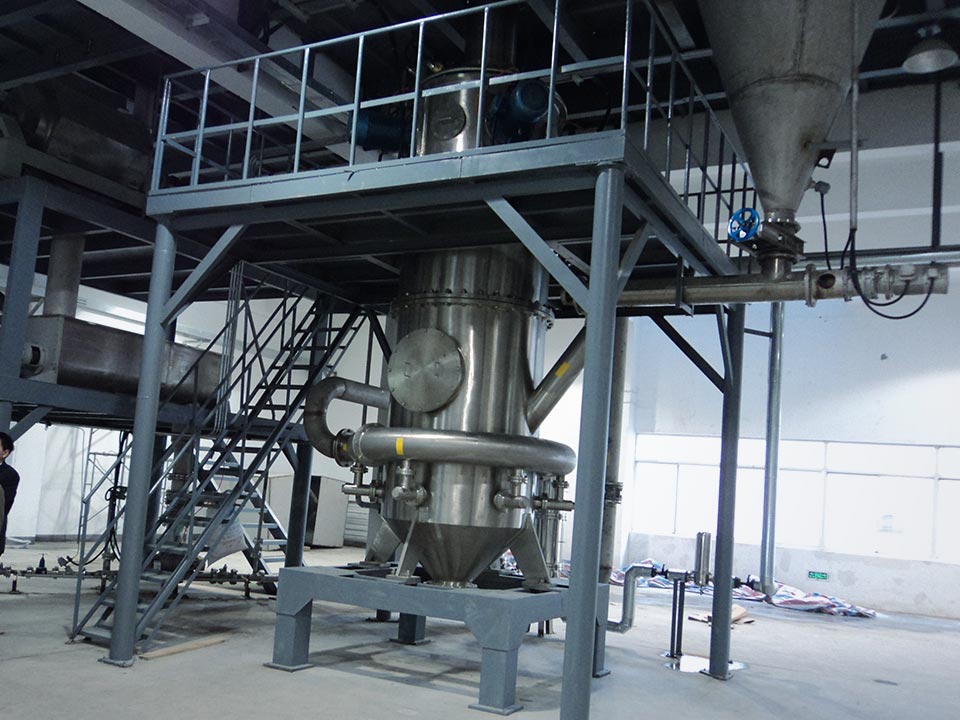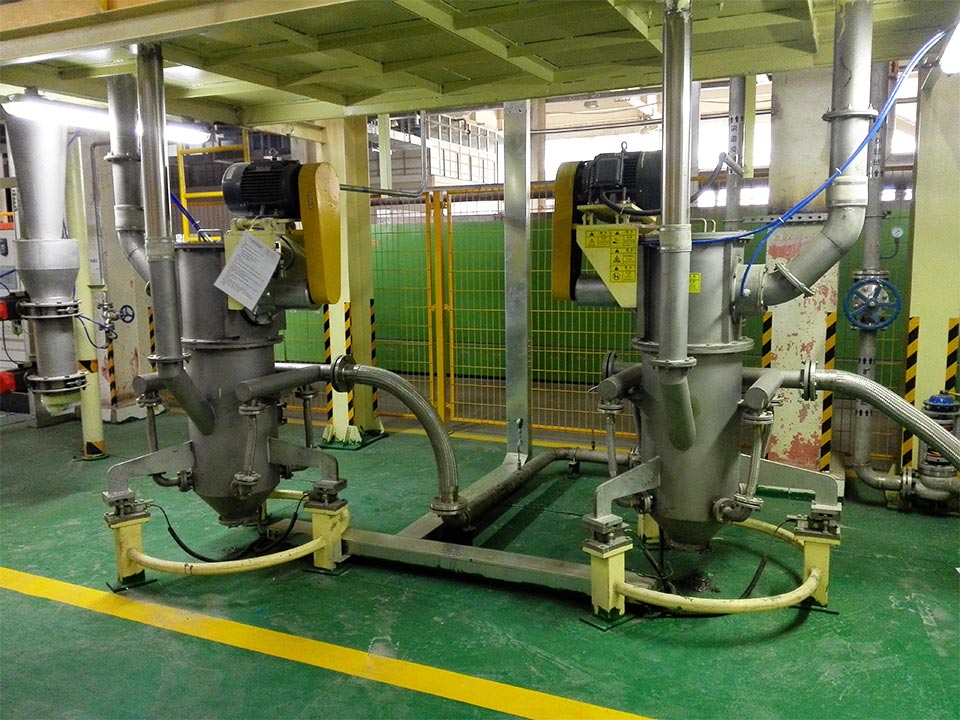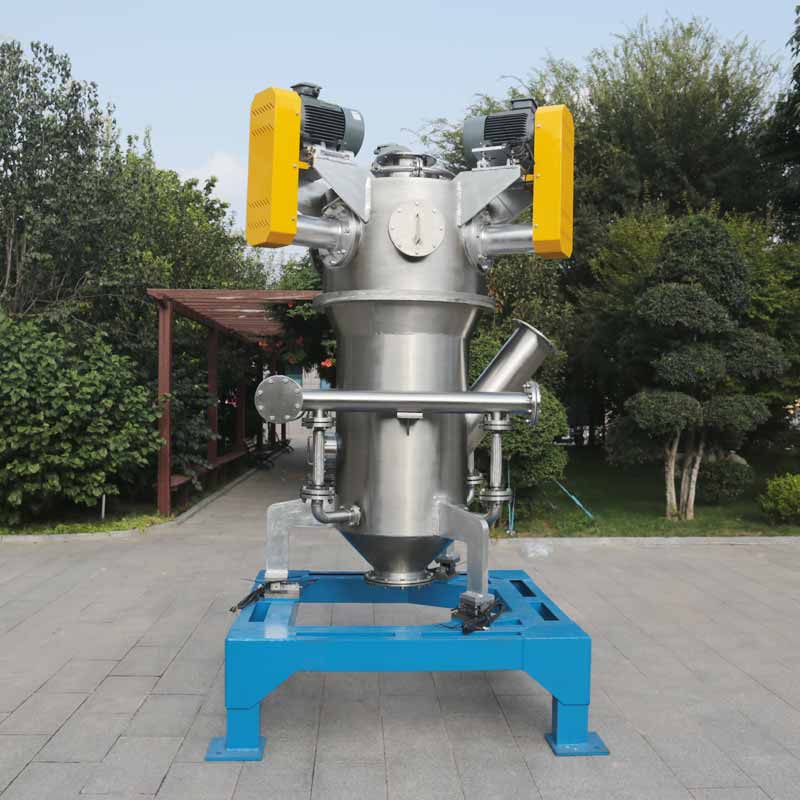Questions & answers about jet mill processing
The jet mill has become a commonly used processing equipment in the industry. The jet mill is widely used in chemicals, mining, abrasives, refractory materials, battery materials, metallurgy, building materials, pharmaceuticals, ceramics, food, pesticides, feed, new materials, It has a wide range of applications for ultra-fine grinding, breaking and particle shaping of various dry materials in environmental protection and other industries.
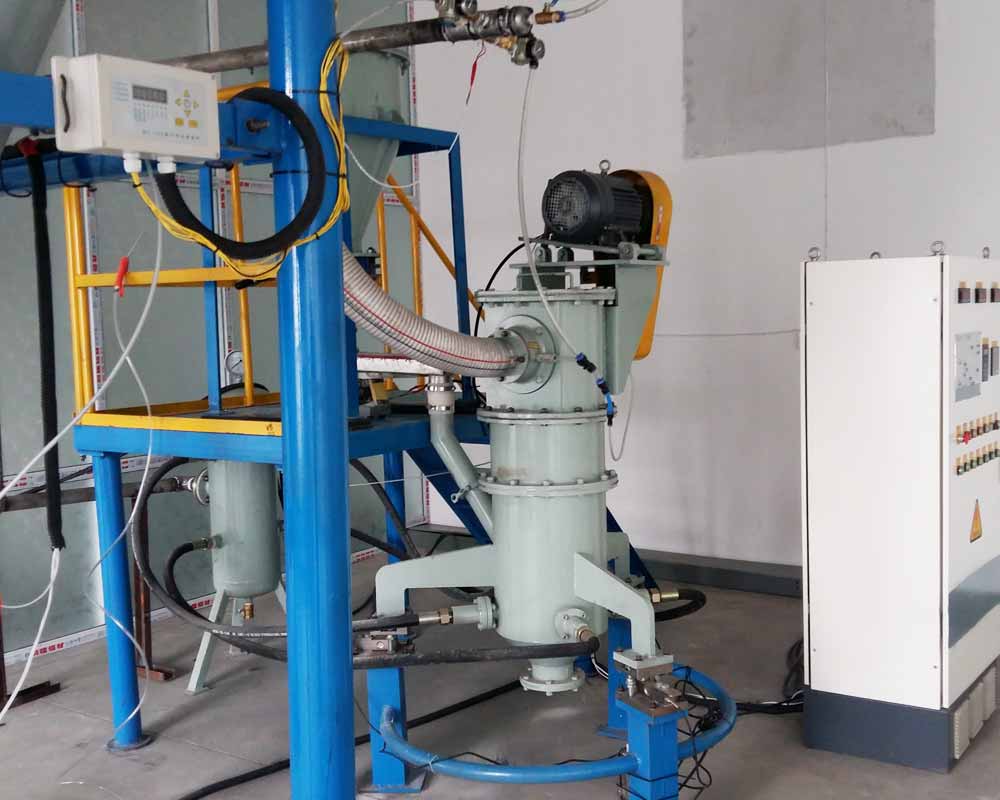
1. What are the main jet mills used in the industrial industry? In addition, among these types, which ones are used more?
The jet mills used in the industry mainly include flat jet mills, circulating tube jet mills, counter jet jet mills, target jet mills, and fluidized bed counter jet jet mills. Among the five types, flat jet mills, circulating tube jet mills, and fluidized bed counter-jet jet mills are used more frequently.
2. If very fine raw materials are subjected to ultra-fine grinding, can a jet mill be used? In addition, whether the feeding speed of the grinder will affect the granularity of the finished product?
For ultra-fine grinding of very fine raw materials, jet mills can be used. The feeding speed in the jet mill will not affect the particle size of the finished product.
3. What is the reason for the insufficient processing fineness of the jet mill?
If the processing fineness of the jet mill is not enough, it depends on the specific situation. If this problem occurs with a new machine, it is because the selection is incorrect, or the selection is wrong. If the problem occurs again after using for a period of time, it is because there is abrasion or malfunction in the machine and equipment. At this time, it should be handled by professional maintenance personnel and cannot be handled without authorization.
All-round service system to solve your problems
ALPA has built a systematic and standardized service guarantee system. From pre-sales Q&A to after-sales service, we ensure that each link is implemented in place and meticulously handled to strictly protect the interests of customers.
01 Full service system
ALPA promises: adhering to the "customer-oriented" concept and resolutely fulfilling its promises to customers.
- Customer-oriented, to provide you with suitable solutions.
- With service as the core, we will serve you from multiple perspectives.
- Take quality as life and build trustworthy products.
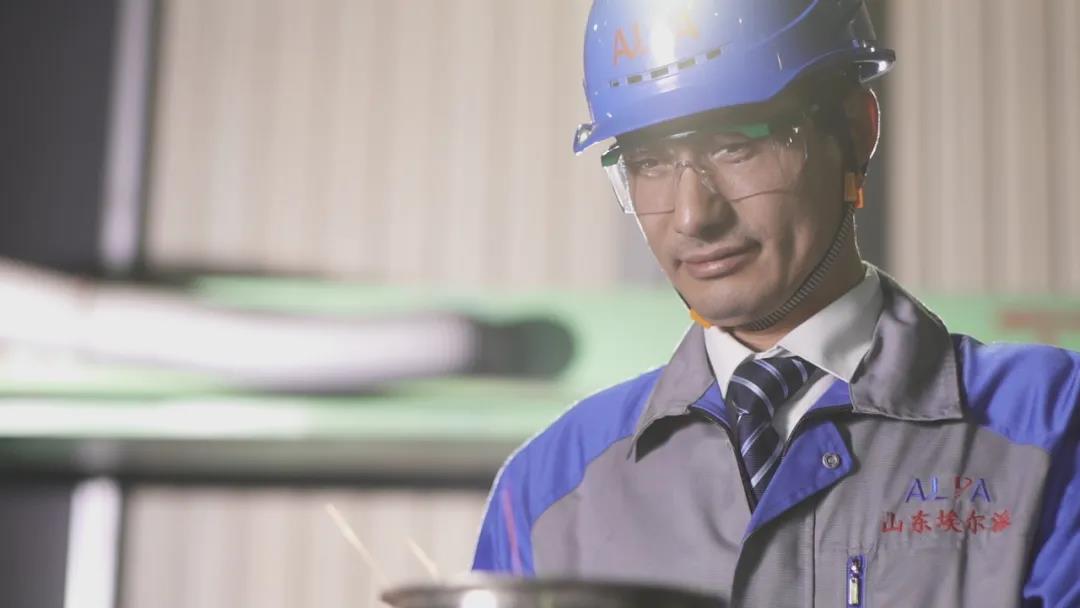
02 Perfect and meticulous service process
We take service as the core, tailor-made cost-effective products for you, provide perfect and meticulous service, 20 years as a day.
- Professionally answer customer inquiries
Whether it is a telephone or online consultation, we will quickly give professional Q&A guidance.
- Tailor-made solutions
Technical experts tailor-made one-to-one to provide you with more suitable program design and configuration.
- Assist in drawing up the construction plan
Through independent product selection efficiency tools, we can help you select the most suitable products and formulate suitable project plans throughout the project.
- Training and installation and commissioning
Provide systematic training for technical personnel dispatched by customers to better meet project requirements.
- Regular testing and return visits
ALPA will regularly send engineers to conduct return visits and inspections on the products. If you encounter any problems, please contact us in time. We will reach the scene as soon as possible to solve the problem for you.
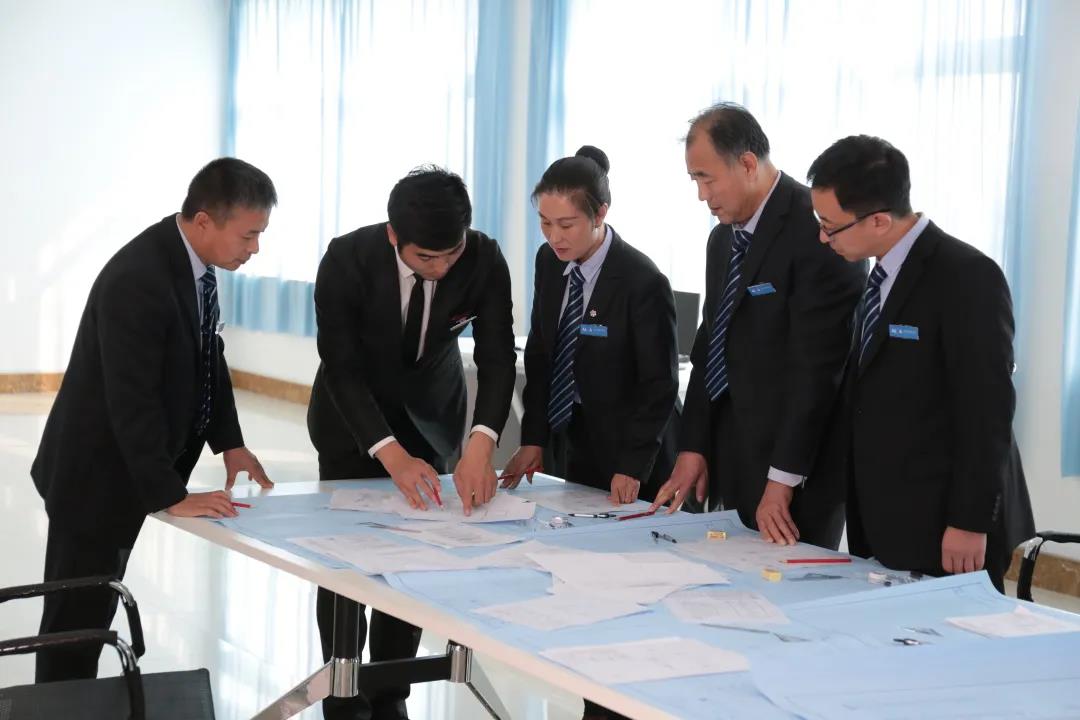
03 Training and installation and commissioning
During the practical operation of the technical personnel dispatched by ALPA for customers, our training instructors will also continue to follow up the project operations to ensure the orderly development of the project and ensure the continuous stable and efficient operation of the customer's production line.
(1) Extensive training courses, expert lecturers follow up the whole process
Multi-dimensional training courses, lecturer follow-up mechanism throughout the process, no matter what your foundation, you can easily master the operating skills.
(2) Dedicated professional installation and commissioning to ensure smooth acceptance
The ALPA installation engineer will guide the installation and commissioning of the equipment throughout the entire process until the trial operation of the entire production line reaches the standard smoothly.
- Installation preparation stage
Check and confirm the order form, count the parts and components required for the equipment, and measure and compare the elevation and geometric dimensions according to the drawings.
- Equipment installation stage
Carry out on-site installation planning according to the design drawings, and gradually begin to install equipment and related supporting facilities.
- Equipment commissioning stage
Further check the equipment and carry out debugging and maintenance before use to ensure that the operating characteristics of the equipment meet the needs of production.
- Equipment acceptance stage
ALPA is responsible for training relevant personnel. When all the project indicators of the production line meet the design standards, you will issue an acceptance certificate.
04 Clear technical division of labor
ALPA has built a complete system to effectively ensure the timely and efficient delivery of information, and provide customers with professional services and technical support.
- Stock order verification
The merchandiser verifies the model, quantity and accessories of the equipment ordered by the customer in detail in accordance with the sales contract to ensure that the stock is fully matched with the order.
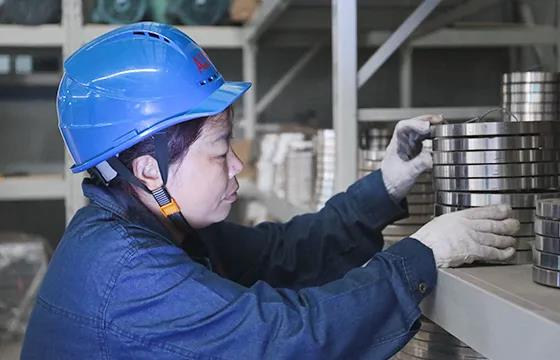
- Equipment factory quality inspection
After the production system completes the equipment production, the quality inspector strictly inspects the records item by item according to the quality inspection details to ensure the quality of each equipment to be installed.
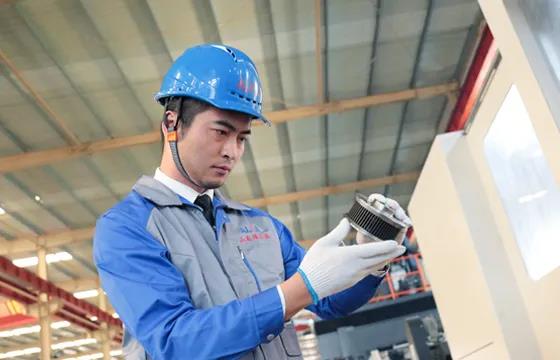
- Packing list review
Before the equipment is packed and sent, the merchandiser will check the packing list one by one to avoid missing and missing shipments.
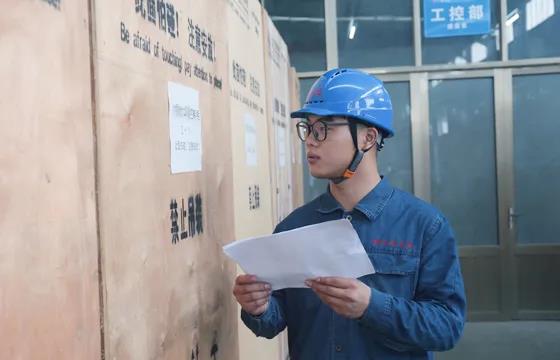
- Scientific packaging and transportation
In equipment boxing and packaging, we adopt professional packaging and modular solutions to ensure the safe and non-destructive delivery of equipment.
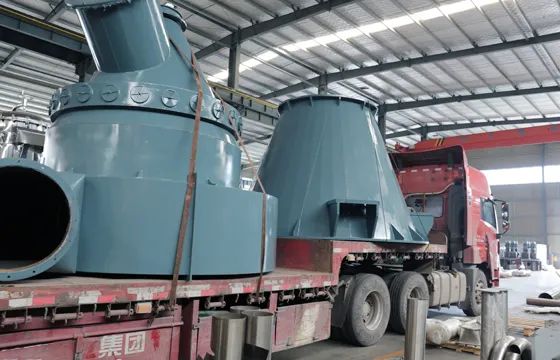
05 Quality after-sales service
ALPA has a more complete after-sales service system and a more timely problem-solving mechanism to effectively protect the interests of customers.
- Three Guarantees Clause
The product implements three guarantees, with a warranty period of 1 year, but does not contain wearing parts.
- One year warranty
The warranty period of the equipment starts from the date of acceptance of the unit commissioning test. With the invoice and warranty certificate, you can enjoy a free warranty of the whole machine for one year. Under the normal use of the equipment during the warranty period, the maintenance costs incurred due to the quality of the unit itself will be borne by ALPA.
- Standardized complaint handling system
During the operation of the project, if there are any problems in the production line, complaints and feedback can be made. We guarantee to complete the problem identification within 24 hours and issue a solution, and help domestic (foreign 10 days) customers solve the problem within 3 days.
For two decades, ALPA has been dedicated to creating the future of advanced materials with powder technology. Unswervingly provide customers with high-quality products and services, casting a solid production backing.
Selection strategy of jet mill
With the development of material refinement and high purification, grinding technology is also constantly improving. As the finest grinding equipment in dry grinding, jet mills have more types. So how do you choose?
It is necessary to know the structure and principle of the main jet mills on the market. According to the structure, the models are mainly divided into (the control granularity is arranged from coarse to fine): disc jet mill, fluidized bed vertical jet mill, fluidized bed horizontal jet mill, superheated steam jet mill.
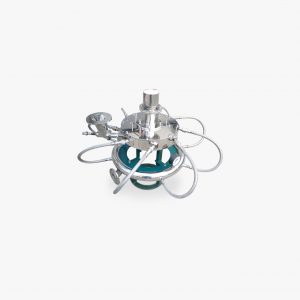
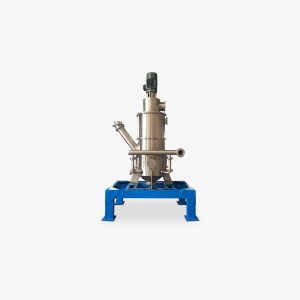
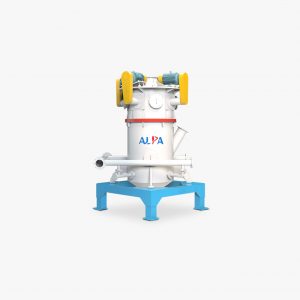
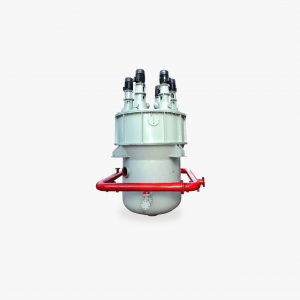
After clarifying the equipment classification, it is necessary to clearly understand the applicable industries of each model.
1. The disc type jet mill, because of its simple structure, easy to disassemble and clean, meets the requirements of clean production, and is mainly used in the fields of medicine, food, and health products.
2. Fluidized bed vertical jet mill is mainly suitable for mass production, such as: chemical industry, minerals, abrasives, refractory materials and other general industries.
3. Compared with the vertical type, the fluidized bed horizontal jet mill is installed horizontally with the grading impeller, which can achieve the purpose of controlling fine particles, and is suitable for the production of refined needs in various industries.
4. Steam jet mill, a model that replaces air compressors, saves energy, reduces consumption, and promotes flow. It is suitable for special industries such as fly ash, slag, barium sulfate, titanium dioxide, talc, white carbon black, aerogel, etc. .
Secondly, it is necessary to distinguish the fineness that can be achieved by each model of the jet mill.
1. Disc jet mill, 200 mesh-5μm, the finer the particle size, the lower the productivity.
2. Fluidized bed vertical jet mill, 200 mesh -3μm, the finer the particle size, the lower the production capacity.
3. Fluidized bed horizontal jet mill, 200 mesh -1μm, the finer the particle size, the lower the production capacity.
4. Steam jet mill, 200 mesh -0.5μm, the finer the particle size, the lower the productivity.
However, generally below 500 mesh, it is recommended to use a mechanical pulverizer. The main consideration is that its production cost is acceptable. The energy consumption of the jet pulverizer is relatively high, but the industries with high added value can be ignored.
Furthermore, the choice is based on the characteristics of the raw materials, such as the viscosity, toughness, fluidity, ductility, moisture absorption, easy oxidation, combustibility and other characteristics of the material will affect the selection of equipment, and it is necessary to communicate with professional and technical personnel in detail and listen. Their suggestions.
Finally, jet mills, especially fluidized bed jet mills, have a variety of grading impellers, which will also affect particle size, output, and particle shape. When selecting equipment, communicate with technicians.
What are the characteristics of the inert gas shielded gas flow classifier
The inert gas shielding gas flow classifier is a closed gas flow classification system developed for the classification requirements of special materials such as flammable, explosive, and easy to oxidize using inert atmosphere gas (nitrogen, argon, carbon dioxide, etc.) circulation protection. The system is upgraded from an ordinary air flow classifier system, which is mainly composed of a closed feeding system, air flow classification system, gas circulation system, and control system. Most of them adopt PLC program control, which reduces human operation and control factors. The control cabinet can be placed in a remote independent control room. Automatic packaging machine is used for packaging and unloading, and monitoring probes are used for on-site observation, which can realize unmanned operation.
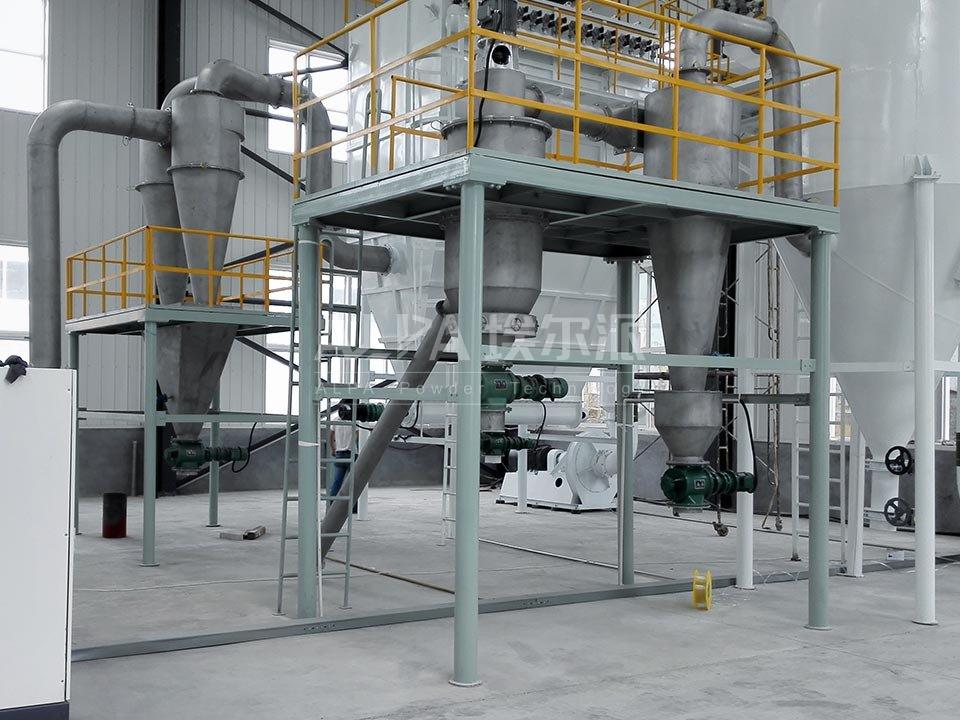
In terms of safety, the inert gas shielded gas flow classifier mainly has the following characteristics:
1. Isolate oxygen and produce fully enclosed. Before the equipment is put into operation, replace the air in the closed loop system with nitrogen. At the same time, the closed filling and unloading system can replace the small amount of air brought in during the filling and unloading process with nitrogen to keep the oxygen content in the system basically stable.
During this process, the oxygen content in the gas stream is continuously monitored with an oxygen content analyzer. When the oxygen content exceeds a certain level, add nitrogen immediately to keep the oxygen content within the safety production standard.
2. Control the concentration of gas and powder. The feeding system of this equipment is a fully enclosed uniform speed device, which is programmed and controlled by the control cabinet. The fully enclosed system can isolate oxygen and control the concentration of materials in the equipment at a constant speed. The feed speed can be set arbitrarily.
If the materials added to the equipment at a constant speed will accumulate in the equipment, safety will not be guaranteed. Therefore, scientifically calculate the shape of the equipment, such as the bending angle of the pipe and the shape of each part, in order to eliminate the dead angle inside the equipment. At the same time, the powder will not accumulate in the pipeline through the driving and scouring of the high-speed airflow in the equipment.
3. Discharge static electricity in time to eliminate fire sources. The pulse dust collector adopts a special carbon steel wire filter material, which can eliminate static electricity in time and ensure that the pulse is cleaned thoroughly. The equipment is all metal parts, all of which are grounded to discharge the powder static electricity as much as possible.
4. Circulating air cooling. Since the entire system is a closed loop system, there are many moving parts in the equipment, and a certain temperature will be generated during high-speed movement. Temperature is very important to the safety of processing. Therefore, installing radiators and coolers on the pipelines of the equipment can effectively reduce potential safety hazards caused by long-term operation or high-temperature environments.
5. Explosion-proof. Explosion-proof holes are provided in different positions of the entire pipeline to minimize the loss when the system internal pressure and concentration are too high to cause an explosion. The motors and other equipment used in the entire system are explosion-proof motors with good sealing performance, effectively reducing dust accumulation.
6. Emergency shutdown. The equipment emergency shutdown trigger switch is connected to the oxygen content analyzer. If the oxygen content monitored by the oxygen content analyzer does not reach the set value within a predetermined time, an emergency shutdown is triggered, the equipment stops feeding, the induced draft fan stops, and the classifier delays. The nitrogen supplement system continues to work until it is manually shut down.
What are the factors that affect the output of the grinder?
When using a grinder for grinding, the output will be affected by many factors, mainly affected by factors such as the particle size of the finished product, the hardness of the material, the humidity of the material, the composition of the material, the viscosity of the material, and the efficiency of the equipment supporting measures. After we understand the influencing factors, according to the actual situation, make adjustments to the influencing factors and try to avoid them. If it is an inevitable and unavoidable factor, find ways to adapt to this situation. In short, after understanding the influencing factors, we can increase the output of the grinder more easily and scientifically.
![]()
The first is the impact of the particle size of the finished product. The fineness requirements are high, that is, the finer the material to be ground by the grinder, the smaller the grinding output of the grinder. If customers have high requirements for the fineness of materials, they can configure other equipment according to their own production capacity and economic strength.
Secondly, the hardness of the grinding material. The harder the material, the more difficult it is to grind, and the more serious the wear on the equipment. In the daily use of the equipment, it should be used strictly in accordance with the instructions of the grinder, which is also the basic point of the daily use and maintenance of the grinder. Try not to overload the grinder to work in the super-capable range.
Third, the humidity of the grinding material. That is to say, when the water content in the material is large, the material is easy to adhere in the grinder, and it is also easy to block during the feeding and conveying process. The qualified materials are not easily separated under the condition of equal wind, which causes the grinding ability of the grinder to decrease.
Fourth, the composition of the grinding material. Before entering the grinder, the more fine powder contained in the raw material, the easier it is to adhere, which affects the conveying and thus the output of the grinder. For materials with a large amount of fine powder, it is recommended to screen the materials with a vibrating screen before grinding.
Fifth, the degree of adhesion of the powdered material. That is, the greater the viscosity of the material, the easier it is to adhere. The greater the viscosity, the smaller the output of the grinder, and it also easily affects the service life of the grinder.
Sixth, the working efficiency of supporting equipment. For crushing the same material, different equipment models will have different output. And the working efficiency and coordination ability of its supporting equipment also have an impact on the grinder.
In many industries, the high-efficiency and high-precision grinding capabilities of jet mills have been brought into play
Jet milling is the use of mechanical or hydrodynamic methods to overcome the cohesion of solids and grind them to grind the material particles above 3mm to 1-45μm. It is a high-tech material processing that adapts to the development of modern science and technology. technology. The ultra-fine jet mill production line is composed of grinder, cyclone separator, pulse dust collector, fan, etc.
Jet mill has comprehensive properties such as air separation, no mesh, uniform particle size, and the production process is continuous. It uses the relative movement between the movable tooth plate and the fixed tooth plate, or high-speed airflow, so that the material is crushed by the impact force of the tooth surface, the friction force between the materials and the impact force. The crushed material enters the cyclone separator for discharge through the rotating centrifugal force and the gravitational force of the fan. The dust enters the pulse dust collector and is recovered by the filter cylinder. The grinding fineness is adjusted with the screen. The whole machine is designed in accordance with GMP standards, all made of stainless steel, and there is no dust during the production process.
Jet mill has been widely used in Chinese herbal medicine, western medicine, pesticide, biology, cosmetics, food, feed, chemical industry and other industries, especially for fiber, high toughness, high hardness and other materials. The grinding effect is more perfect.
1. Chemical papermaking:

(1) The ultra-fine catalyst can increase the cracking speed by 1 to 5 times;
(2) Chemical fibers and textiles, improve smoothness (addition of titanium oxide, silicon oxide);
(3) Rubber, reinforcement, brightening, anti-aging (calcium carbonate, titanium oxide);
(4) Paint, paint, dye, high adhesion, high performance;
(5) Daily chemicals, cosmetics, toothpaste.
2. Biomedicine:

(1) Sub-micron and nano-level injections;
(2) Refining drugs to improve the absorption rate (superfine calcium);
(3) Refined health products to improve absorption rate;
3. Food deep processing industry:

(1) Fiber food, wheat bran, oat bran, corn bran, corn germ residue, bean bran, rice bran, sugar beet residue, bagasse;
(2) Calcium supplement foods, animal bones, shells, skins, etc. are all organic calcium, which is easier to be absorbed and utilized by the human body than inorganic calcium;
(3) Soft drink processing, the use of airflow micro-pulverization technology to develop soft drinks, such as tea powder, bean solid beverages, ultrafine bone powder to prepare calcium-rich beverages, instant mung bean powder, etc.
The development of jet mills has greatly improved the crushing capacity of the industry. With the development of jet mills and the research and development of ultra-fine jet mills, more and more companies have got rid of heavy labor and become more efficient and precise.
Factors affecting performance parameters of jet mill
The factors affecting the performance of jet mill include structural parameters and process parameters. Structural parameters refer to the various parameters of the machine itself, including the nozzle structure and the selection of grading equipment. Process parameters refer to the various parameters that affect the process performance of the equipment due to production operations, including the control of the feed size, the control of the feed rate, the selection of high-pressure working fluid, and the limitation of particle size.
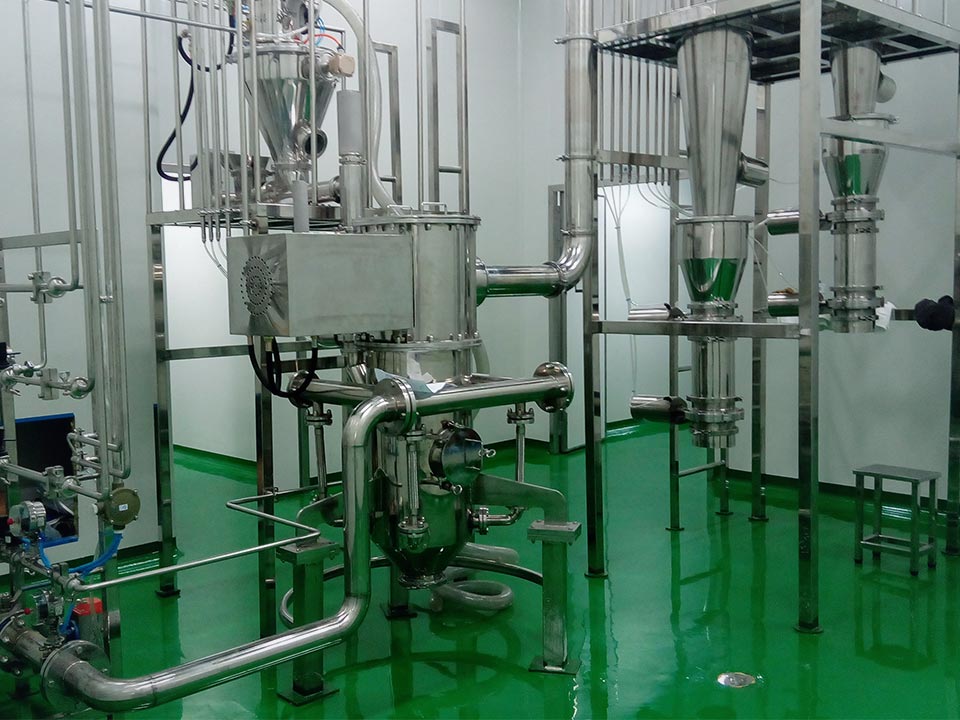
The details are as follows:
1. Feeding particle size control
Most jet mills have a certain upper limit on the feed particle size. Take the fluidized bed jet mill as an example. After the material enters the crushing chamber, it can be fully accelerated before colliding and grinding with other particles. It is difficult for large particles to accelerate completely after entering the crushing chamber, which will make them stay in the machine for too long, resulting in excessive energy consumption. Therefore, in the large-scale production of ultrafine powders, pre-grinding raw materials with too large particle size is an effective way to save energy and reduce consumption.
2. Working medium
At present, the working medium of jet mill is mainly compressed air, superheated steam, inert gas, etc. The choice of working fluid has a certain influence on the grinding effect and economy. Superheated steam is superior to air in terms of fluidity and critical flow rate, and a higher flow rate and uniform flow field can be obtained. However, to use superheated steam as a working fluid, it must be ensured that it is still in a superheated state before entering the product grinding device, otherwise it will cause the material to condense.
3. Feeding speed
The feed rate is an important parameter reflecting the production capacity of jet mills. In the grinding process, choosing the best ratio of the air inlet flow rate to the feed rate is the key to improving the grinding efficiency. Under normal circumstances, under a certain intake air flow condition, the feed rate is directly proportional to the product particle size. However, if the feeding speed is too fast, it will increase the density of particles in the crushing zone and interfere with each other, which is not conducive to the acceleration of the particles, and it is difficult to achieve sufficient and effective collisions between the particles, which affects the crushing efficiency; the feeding speed is too slow, and the particles stay in the crushing zone for time Extending, this will reduce the particle density and reduce the collision rate, resulting in a decrease in production capacity and an increase in energy consumption per unit of output.
4. Granularity limit
During the grinding process of jet mill, as the particle size of the material decreases, the crystal uniformity and strength of the material increase. After reaching a certain level, the particle size of the material no longer decreases or decreases very slowly, that is, the grinding limit of the material is reached. At this time, the specific surface area of the material increases, the surface activity of the particles increases, and the agglomeration and grinding between particles are in a dynamic equilibrium state. Even if the grinding time is prolonged, it is difficult to further reduce the particle size of the material.
Features of ultra-fine grinding equipment
After the material becomes finer, many new properties will appear. Pigments, medicines, catalysts, fine ceramics, abrasives, magnetic materials, solid lubricants, metal powders and many other aspects require ultra-fine powders. Ultra-fine powder requires extremely fine particle size, uniform particle size distribution, and high product purity, so it is very important to select appropriate ultra-fine grinding equipment.
Jet mill
Grinding principle: impact, collision Feeding size: <2mm Product size d97/μm: 3~45
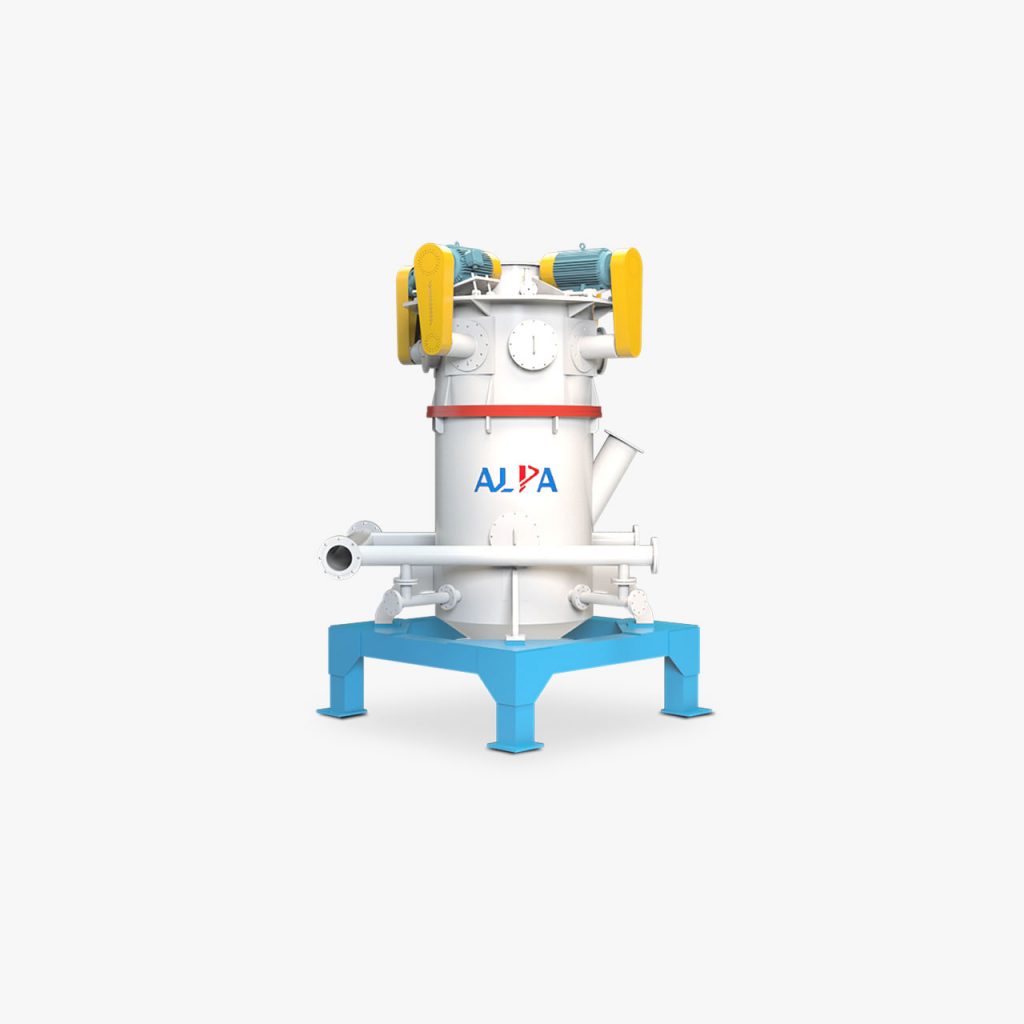
Advantage:
- The production process is continuous, the production capacity is large, and the degree of automation is high;
- The products processed by it have small particle size and narrow particle size distribution;
- High purity, especially suitable for crushing medicines and other materials that are not allowed to be contaminated;
- The particles have high activity and good dispersibility.
Shortcoming:
There is a blind zone inside, which will cause the phenomenon of failure to crush; there are certain requirements for the upper limit of the feed size, and it is difficult to crush the dense, fibrous, and flake materials.
Vibration mill
Grinding principle: friction, collision, shearing Feeding size: <5mm Product size d97/um: 3~74
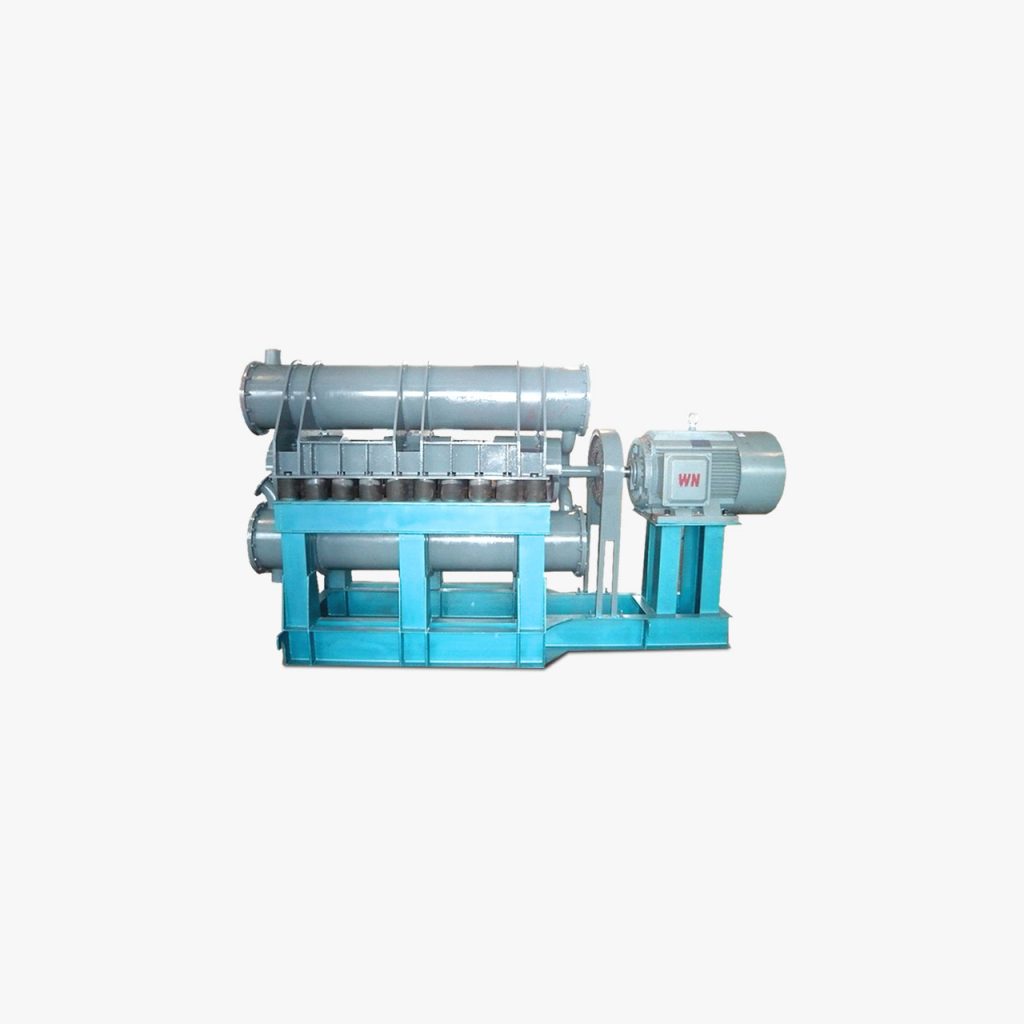
Advantage: Compact structure, small size, light weight, low energy consumption, high output, concentrated grinding particle size, simplified process, simple operation, convenient maintenance, and easy replacement of lining media
Shortcoming: Distorted, weak strength; bearing is severely worn and easily damaged.
Stirring mill
Grinding principle: friction, collision, shearing Feeding size: <1mm Product size d97/μm: 2~45
Advantage: Small footprint, uniform particle size distribution, ultra-fine product, low noise, high efficiency, energy saving, low pollution, and simple operation.
Shortcoming: Due to the uneven energy input density and the secondary agglomeration of the powder, it is still basically grinding micron powder; due to the high-speed operation of the agitator, it is inevitable to produce wear and heat transfer problems, so this type of equipment is not suitable for grinding high Hard materials and heat-sensitive materials.
Colloid mill
Grinding principle: friction, shearing Feeding size: <0.2mm Product size d97/μm: ≤20
Advantage:
- Simple structure, convenient equipment maintenance;
- It is suitable for materials with higher viscosity and larger particles.
Shortcoming: The material flow rate is not constant. For materials with different viscosities, the flow rate varies greatly; due to the high-speed friction between the rotor stator and the material, it is easy to generate greater heat and denature the processed material; the surface is easier to wear, and after wear, The refinement effect will be significantly reduced.
High-speed mechanical impact mill
Grinding principle: impact, impact, shear Feeding size: <10mm Product size d97/μm: 8~45
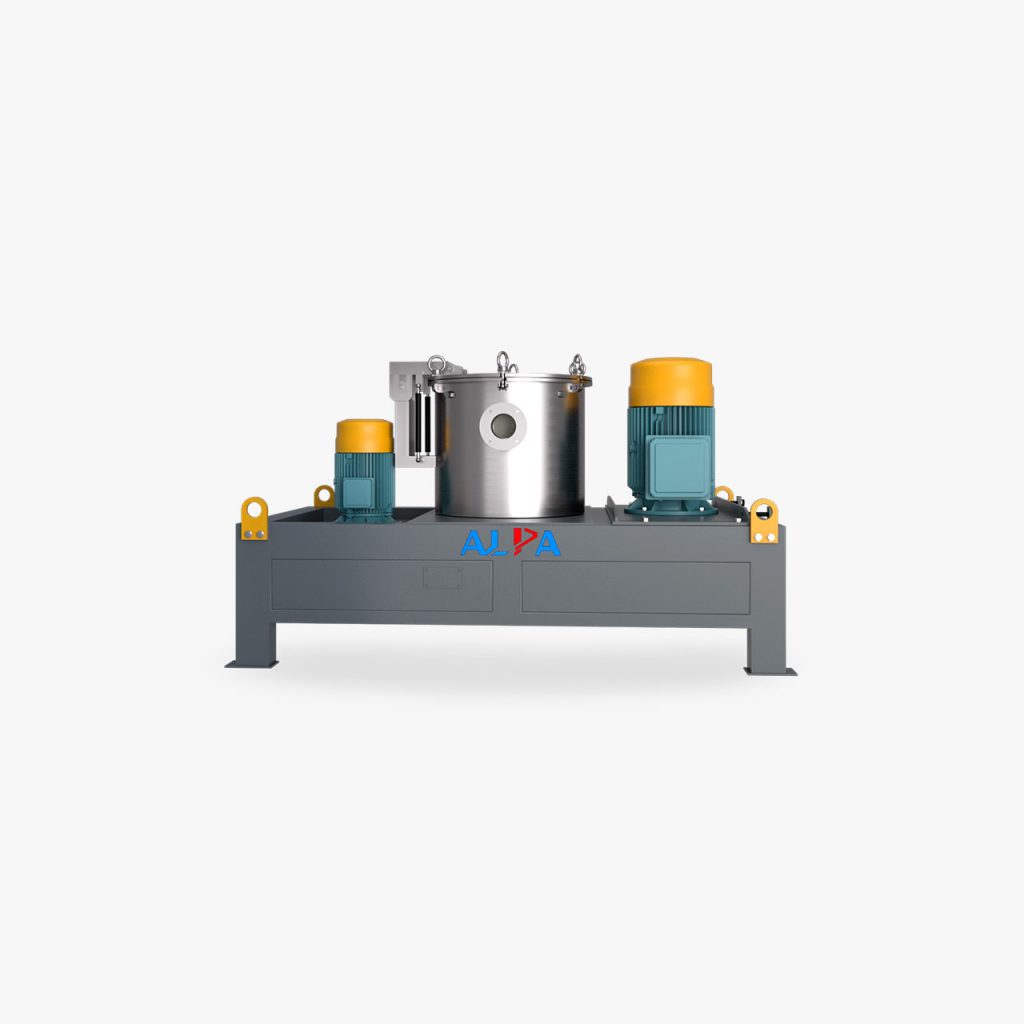
Advantage:
- Simple structure and easy operation;
- Small footprint and high grinding efficiency;
- Low equipment operating costs;
- It is more suitable for the deep processing of medium and low value-added non-metallic mineral products with medium hardness below 1000 mesh.
Shortcoming: Because the high-speed operation of the machine will cause wear problems, it is not suitable for crushing materials with high hardness; tough materials have a strong absorption capacity for impact energy and are not easy to break, so materials with too high toughness should not be crushed by this type of mill; in addition, There is a problem of heat generation, and appropriate measures must be taken to crush heat-sensitive substances.
High pressure roller mill
Grinding principle: extrusion, friction Feeding size: <30mm Product size d97/μm: 10~45
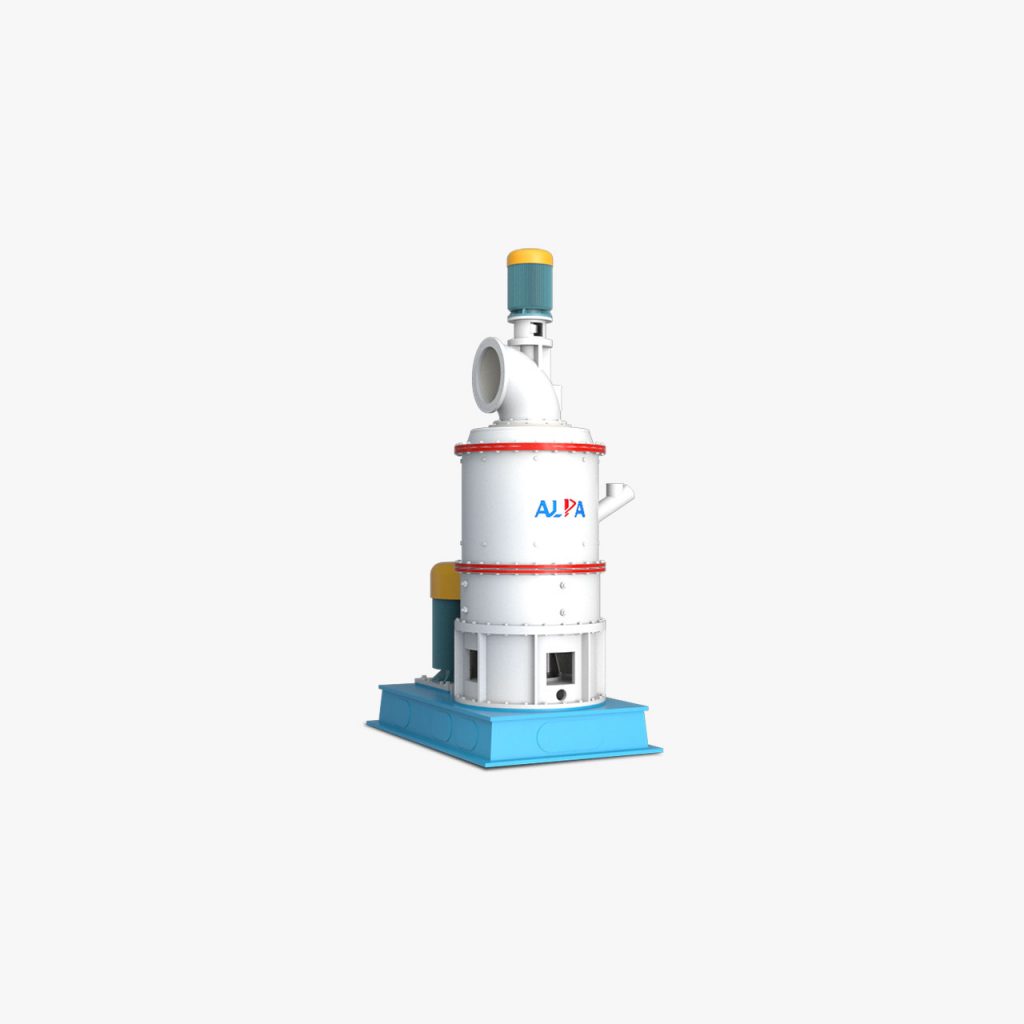
Advantage: The unit crushing energy consumption is low, the unit steel consumption is low, the unit processing capacity is large, and the crushed product has a uniform particle size. Small footprint and high equipment operation rate.
Shortcoming: There will be edge effects, vibration and stuffiness, squeeze roller wear, etc.
High pressure water jet mill
Grinding principle: extrusion, friction Feeding size: <0.5mm Product size d97/μm: ≤45
Advantage: It has strong dissociation, high efficiency, energy saving and low environmental pollution, and can significantly improve the labor environment.
Shortcoming: The high-pressure water jet pulverization technology is still in its infancy, and the main application scope is only a few materials below the medium hardness, and the fineness after pulverization needs to be further improved. At the same time, the high-pressure water jet pulverization equipment has no competitive products.
Sanding machine
Grinding principle: friction, collision, shearing Feeding size: <0.2mm Product size d97/μm: ≤20
Advantage: High production efficiency, strong continuity, low cost and high product fineness.
Shortcoming: Not suitable for high-viscosity materials and requires pre-mixing.
Rotary Ball Mill
Grinding principle: friction, impact Feeding size: <5mm Product size d97/μm: 5~74
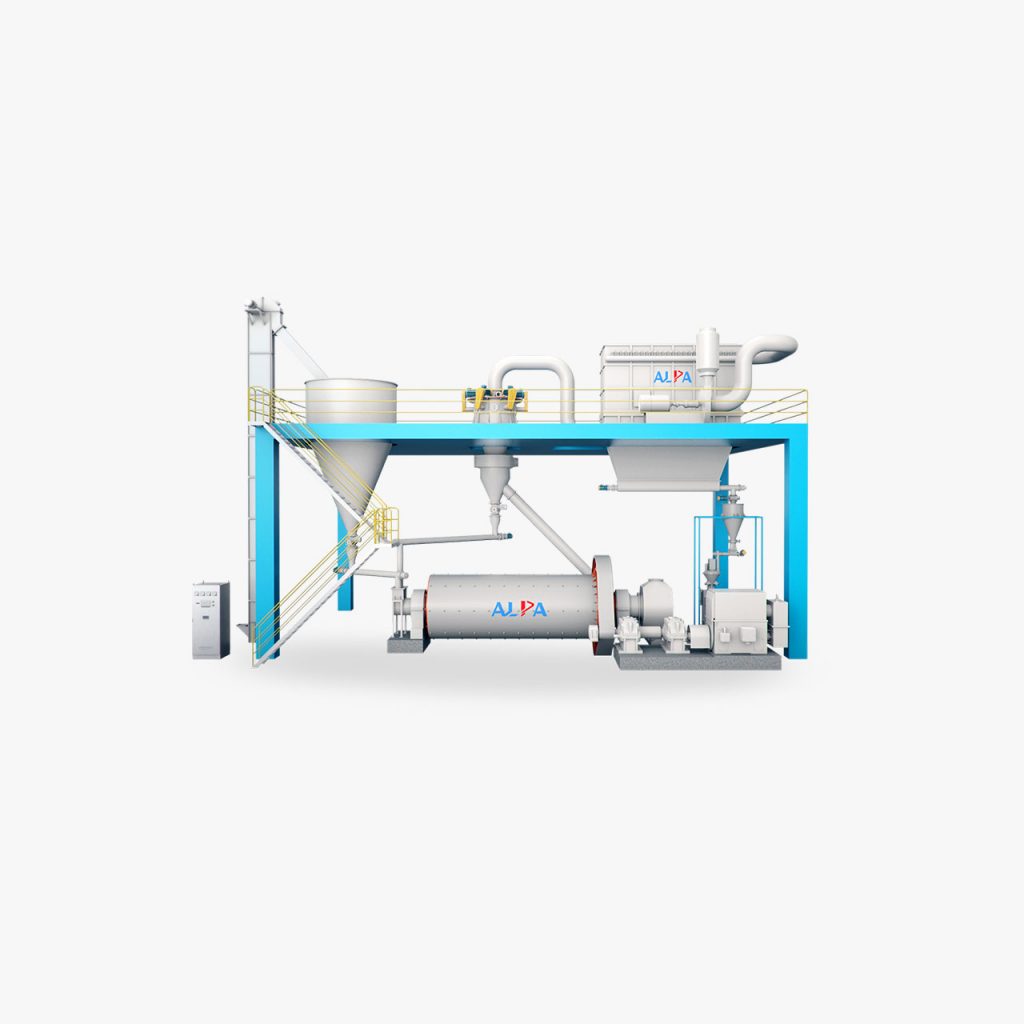
Advantage: It is suitable for a variety of materials, can be produced continuously for a long time, has a large production capacity, can meet the needs of large-scale production, is easy to adjust the fineness of the product, and the maintenance and management are simple and easy to carry out. It has a good sealing device to prevent dust from flying.
Shortcoming: The work efficiency is low, the body is heavy, the configuration is expensive, and the production cost is high.
Cyclone or cyclone flow self-mill
Grinding principle: impact, collision, shear, friction Feeding size: <40mm Product size d97/μm: 10~45
Advantage: Low energy consumption, less auxiliary equipment, easy to realize production; automation, product granularity is relatively stable.
Shortcoming: The liner wears quickly and is difficult to replace, and the hard ores are not easy to handle.
Grinding and peeling machine
Crushing principle: friction, collision, shearing Feeding size: <0.2mm Product size d97/μm: ≤20
Advantage: High output, high stripping efficiency, fine product size, continuous production, and small floor space.
High-pressure homogenizer
Crushing principle: cavitation effect, leakage and shear Feeding particle size: <0.03mm Product particle size d97/μm: 1~10
Advantage: Small footprint, high efficiency, large energy, fast response time, low operating cost
What are the reasons why the spindle of jet mill is easy to be damaged?
Jet mill, as one of the main equipment for ultrafine grinding, is widely used in ultrafine grinding of non-metallic minerals and chemical raw materials. The particle size limit of the product depends on the solid content in the mixed gas stream and is directly proportional to the unit energy consumption. In addition to fine particle size, airflow grinding products also have the characteristics of narrow particle size distribution, smooth particle name, regular particle shape, high purity, high activity, and good dispersibility.
The jet mill has many core accessories, and these attachments are also fragile parts. If you do not pay attention to maintenance, it will cause serious consequences, especially the break of the jet mill spindle will cause downtime, and output loss cannot be estimated. The following section introduces the reasons for the breakage of the jet mill spindle.
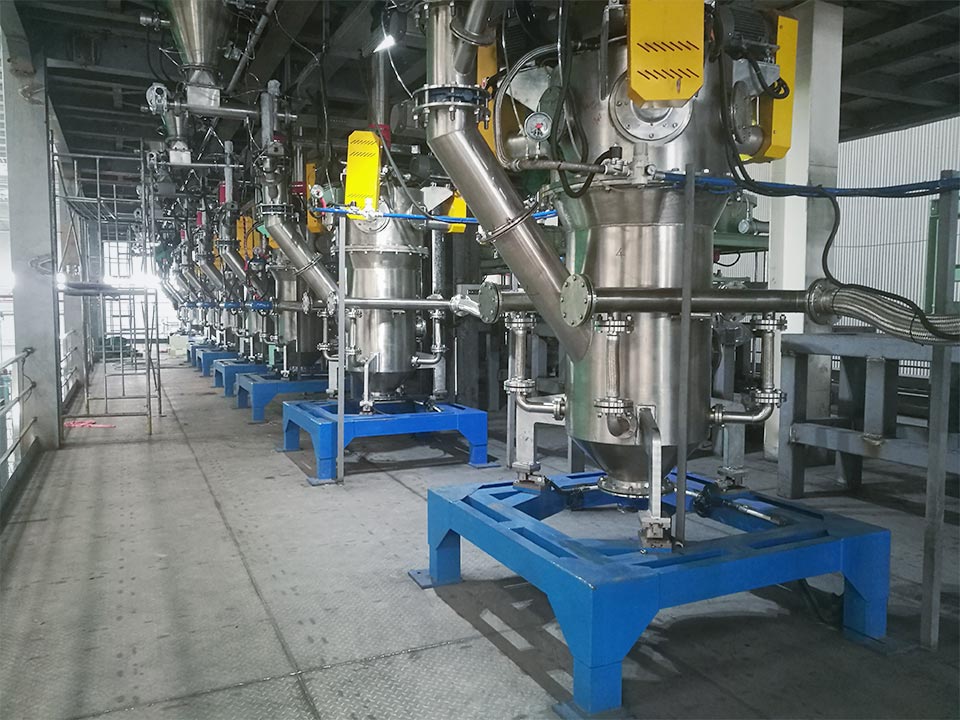
Reasons for easy damage of jet grinding spindle:
1、Since jet mills need to pulverize and grind large ore for a long time, mechanical impact will cause fatigue damage to the spindle. If it is operated for a long time, the surface of the spindle will wear and cracks will occur if care is not taken.
2、Excessive air supply will cause the airflow machine to run overloaded. When the jet mill is used, it needs to be properly fed, and the workload of each machine is limited. If this limit is exceeded, parts are easily damaged during load operation, which will affect the overall service life of the jet mill.
3、In the process of mining and transportation, ore is often mixed with some scrap metals. When these objects pass through the electromagnet located on the upper part of the belt, due to the weak adsorption capacity of the electromagnet and the metallic characteristics of the manganese steel material, the electromagnet cannot be eliminated, resulting in These materials are incorporated into the jet mill in the ore and mud, causing frequent impacts on the main shaft and other parts.
In view of the above reasons, when we use the jet mill, if we want to use it for a longer time, try to ensure that its workload is within the range that the machine can withstand, and at the same time pay attention to its maintenance work, a good maintenance work Can also better help use the machine.
[Ball mill + air classifier] This configuration is very cost-effective
At present, due to the increase in the price of raw materials and the decline in the price of finished products, the first element that many non-mining manufacturers consider before production is to control costs. Among the many grinding schemes, the configuration of "Ball Mill + Air Classifier" is very cost-effective, so it is widely praised. Let me introduce the specific reasons. The advantage analysis of this combination can be divided into three parts: "drying, ball milling, and grading".
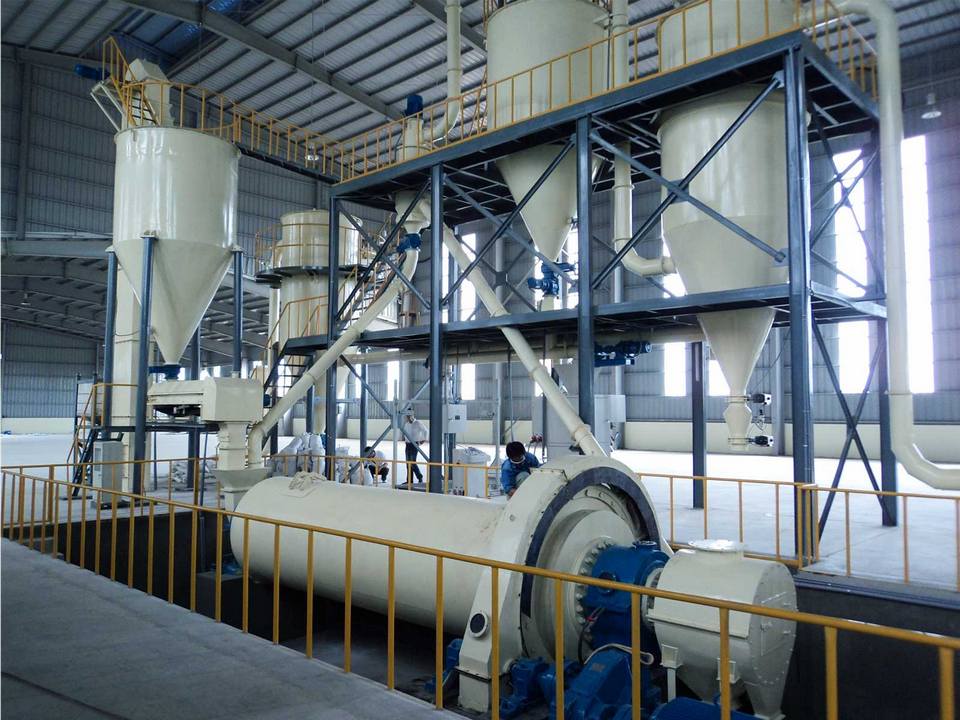
- Drying
Drying is easy to be overlooked in the introduction of the production line, but it is also very important. This is because the raw ore contains 10-15% moisture. If it is not dried before the grinding process, the ground material will easily agglomerate and affect subsequent production.
In terms of matching, a three-cylinder dryer is generally used. Since the metal steel plate conducts heat faster than the material being dried, the steel plate and the lifting plate of the cylinder body are heated first, and then the heat is transferred to the material by conduction and radiation. The temperature rises after being heated, and the water vapor is separated from the material and discharged into the atmosphere along with the smoke and dust after passing through the dust removal equipment. In order to get a better drying effect, it will also be matched with a metering speed control scale to achieve the purpose of uniform feeding and improve the drying efficiency.
Ball mills are currently one of the most widely used grinding machines. Because of their excellent production and good grinding capabilities, they are quite popular in the non-mining field. However, in order to be "cost-effective", there are still a lot of knowledge in the ball mill. For example, a reasonable ratio of grinding media-as the grinding progresses, the particle size distribution continues to decrease, and the crushing force required for particle grinding is also changing. When the particle size reaches a certain fineness range, the crushing method will be thrown off. The main impact crushing gradually changes to the main grinding crushing. Therefore, in order to make the grinding medium ball in the ball mill meet the requirements of impact and grinding, it is necessary to perform "grading", and use a larger grinding medium ball with a smaller grinding medium ball to achieve a better grinding effect. .
Improving the efficiency of media grinding materials is equivalent to saving energy. However, the specific ratio of grinding media must be determined according to actual production conditions. Generally speaking, the ball mill is fully capable of grinding 325-2000 mesh materials.
- Grading
In the grinding process, often only part of the powder meets the particle size requirements. If the products that have reached the requirements are not separated in time, it will cause energy waste and over-grinding of some products. In addition, after the particles are refined to a certain degree, the phenomenon of grinding and agglomeration occurs, and even the agglomeration of the particles becomes larger and the grinding process is deteriorated. For this reason, products should be classified during the preparation of ultrafine powders to improve grinding efficiency and reduce energy consumption.
The air classifier has the advantages of low cost, convenient and easy operation, and can be matched with various mechanical grinding equipment to form a micro powder processing production line. In order to enhance the performance of the classifier, the various components of the classifier can also be optimized.
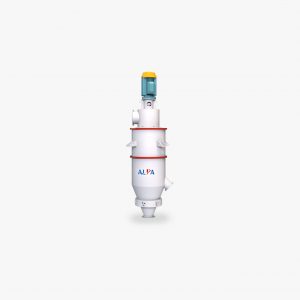
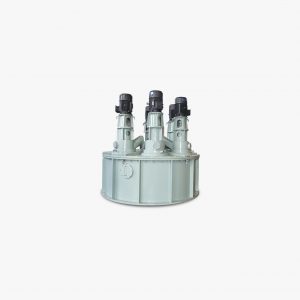
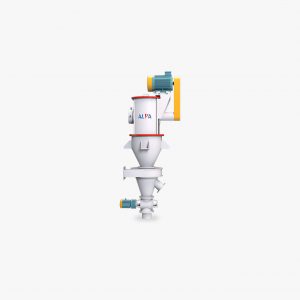
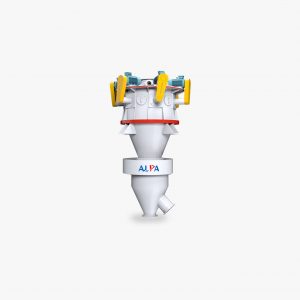
Based on the above, through reasonable matching and optimization, the "Ball Mill + Air Classifier Production Line" can achieve low investment, low unit energy consumption, high fine powder content in the finished product, and stable equipment operation, effectively helping customers save investment And operating costs, increase product profits, are called "high cost-effective" products in the non-mining field.

